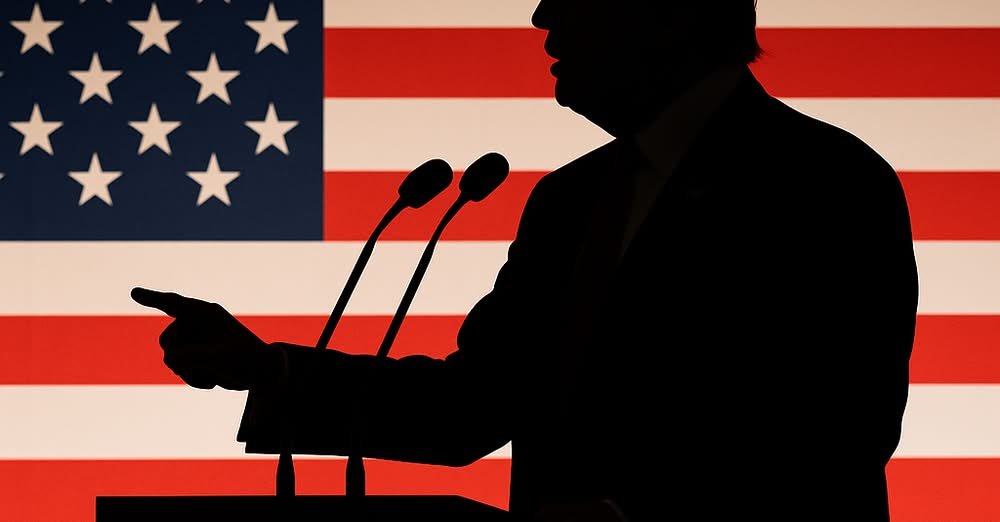Donald Trump populist politics has reshaped U.S. governance and global discourse. A former businessman, reality TV star, and the 45th President, he transformed the Republican Party into a populist movement. Controversial yet influential, he exploited mass fears and emotions. His performances—brash insults, social media outbursts, scandalous rhetoric—appeared chaotic, even dangerous. Yet beneath the theatrics lay a calculated strategy that resonated.
Impact-Driven Leadership: Rhetoric as Power
Trump’s leadership style, described by researchers as “Impact Leadership”, emphasized simplicity, urgency, and emotional connection. He framed crises—immigration, globalization, economic stagnation—to mobilize voters beyond elite circles. This rhetorical model starkly contrasted with progressive politicians like Kamala Harris, who focused on vision and inclusivity .
Through anti-elite messages, xenophobic tropes, and divisive language, Trump’s communication amplified negativity and polarization within American politics . His refrain “Make America Great Again” tapped into widespread economic anxiety and identity loss, fueling his appeal among disenfranchised voters.
Populist Politics in Action: Policies and Influence
Under Trump’s new populist politics, we observed striking policy moves:
- Tax reforms that offered incentive-heavy benefits to working Americans—though critics warn these deepened deficits and favoured millionaires .
- Trade wars and tariffs, especially targeting China, signaling protectionism over free trade.
- Project 2025, a conservative blueprint with authoritarian leanings, designed to overhaul federal governance and consolidate executive authority .
- Authoritarian-style appointments and sweeping executive actions targeting dissenters, causing legal backlash .
These moves demonstrated a departure from moderate conservatism, embracing populist radicalism and prioritizing loyalty over institutional integrity .
Trump’s Consolidation of Power
Trump continues to exert unmatched influence within the GOP. Mid‑2025, Congress passed his “big, beautiful” tax‑cut bill, deepening his political control but escalating national debt and reducing healthcare safety nets . Republican lawmakers largely fell in line, fearing intra-party ousters or Trump’s disapproval .
In Texas, GOP-led redistricting backed by Trump highlights strategic efforts to maintain congressional dominance . His campaign’s influence extends to enforcing party loyalty over individual ambition.
Simultaneously, concerns grow over democratic norms. Trump’s purge of senior officials in cybersecurity and justice departments during election disputes illustrates authoritarian tendencies .
Populism vs. Democracy: The Legacy Question
Studies across 60 countries reveal populist governance often yields economic slowdown and democratic erosion: GDP growth lags ≈10% under populists, and judicial safeguards weaken . Trump’s populist tactics—scapegoating elites, adopting authoritarian mechanisms like Project 2025—mirror this global pattern .
Domestically, new Medicaid cuts under Trump have prompted Democratic backlash via rural billboards, illustrating socioeconomic consequences of his agenda . Meanwhile, Democrats are exploring ways to recapture parts of Trump’s working-class voter base by appealing to their social moderateness and economic concerns .
Despite growing distrust in institutions and controversies like the Epstein case, Trump retains substantial support, partly due to his populist base .
Conclusion: Spectacle with Lasting Effects
Donald Trump might project the image of a political entertainer—but his populist politics constitute a powerful political technology. He unified communication and narrative to override procedural norms, centralizing executive power and leveraging loyalty. His leadership has redefined the Republican Party, tested U.S. democratic frameworks, and left a global imprint on populist governance.
Whether his legacy becomes a cautionary tale or a turning point depends on outcomes: can institutions withstand his authoritarian impulses? Will economic consequences curb populist influence? Ultimately, Trump’s era showcases how spectacle, emotion, and loyalty can reshape political reality.
Read more on Politics
External References
Coverage of redistricting, Medicaid cuts, institutional purges https://www.reuters.com/world/us/despite-risks-texas-republicans-launch-trump-backed-effort-redraw-congressional-2025-07-22/?utm_source=chatgpt.com https://www.theguardian.com/us-news/2025/jul/27/medicaid-cuts-billboards-democrats?utm_source=chatgpt.com
Studies on Impact Leadership vs. vision-driven discourse https://www.reuters.com/world/us/republicans-embrace-trumps-populist-tax-push-with-midterms-mind-2025-05-15/?utm_source=chatgpt.com https://www.frontiersin.org/journals/communication/articles/10.3389/fcomm.2025.1541513/full?utm_source=chatgpt.com
Guardian analysis of populism rooted in inequality https://www.theguardian.com/commentisfree/2025/apr/13/trump-populists-human-nature-economic-growth?utm_source=chatgpt.com
Reuters on tax bill dominance, Project 2025, congressional power https://www.reuters.com/world/us/project-2025-what-is-it-who-is-behind-it-how-is-it-connected-trump-2024-07-12/?utm_source=chatgpt.com
FT findings on economic underperformance and democratic backsliding under populists https://www.ft.com/content/1d57892f-913b-4bbe-8d74-1cbadd2c8851?utm_source=chatgpt.com
